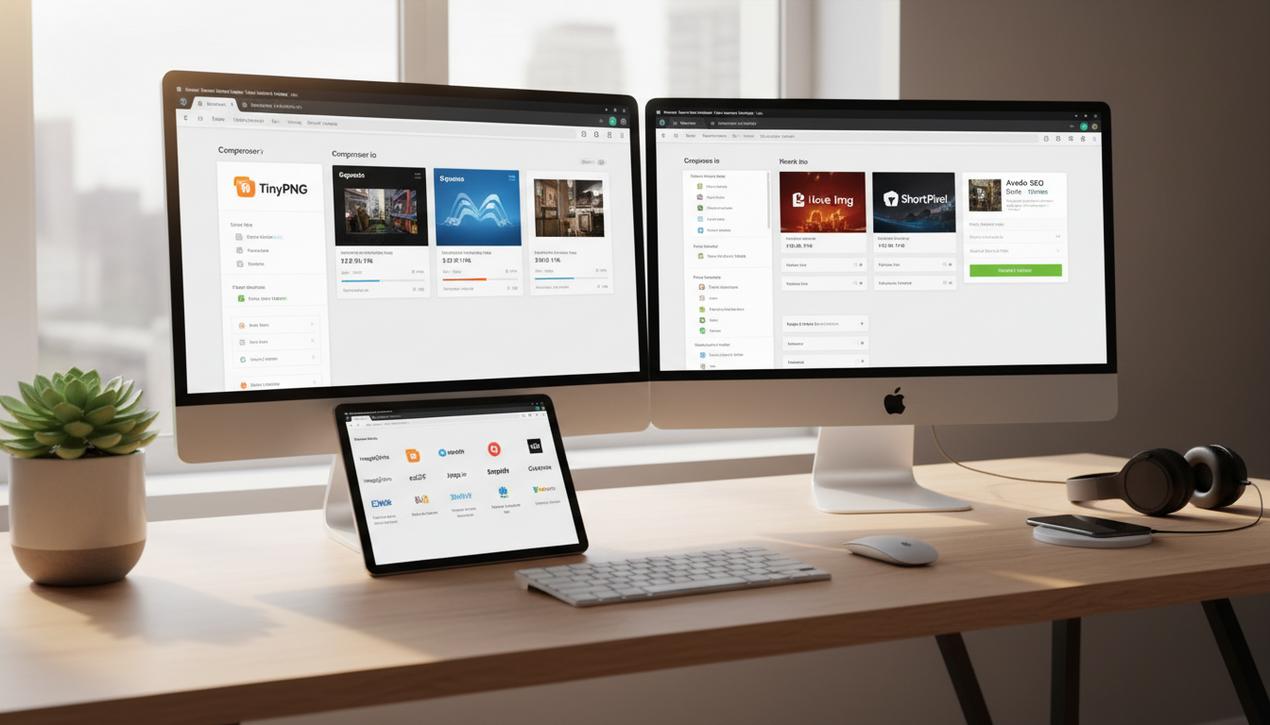Best PHP IDEs of 2025: A Complete Guide


Despite the rise of new languages, PHP remains a cornerstone of web development. In 2025, it powers over 77% of all websites with a known server-side programming language, a testament to its resilience and massive ecosystem. To effectively build within this ecosystem, selecting the right Integrated Development Environment (IDE) is more critical than ever. Gone are the days of simple text editors; modern developers require intelligent tools that streamline workflows and enhance code quality. Today’s top PHP IDEs do more than just syntax highlighting. They feature powerful debuggers, seamless Git integration, and increasingly, AI-powered assistants that suggest code, spot errors in real-time, and dramatically accelerate development cycles. Whether you are a beginner freelance developer or a seasoned professional working on enterprise-level applications, choosing the right PHP IDE is the foundational step toward writing cleaner, more efficient, and maintainable code. This comprehensive guide reviews the 12 best PHP IDEs, both free and paid, to help you find the perfect match for your needs.
What Is a PHP IDE and Why Is It Essential?
An Integrated Development Environment (IDE) is far more than a text editor. It is a comprehensive software suite that consolidates the essential tools a developer needs into a single, cohesive interface. For a PHP developer, it transforms the complex task of writing, testing, and debugging code into a structured and highly efficient process.
Core Features of a Modern PHP IDE
A high-quality IDE boosts productivity through a range of indispensable features. Intelligent code completion analyzes your project to suggest relevant variables, functions, and classes. Syntax highlighting improves readability, while real-time error detection flags issues before you even run the code. An integrated debugger, often with Xdebug support, is crucial for step-by-step code inspection. Finally, seamless integration with version control systems like Git is a non-negotiable standard for modern development workflows.
How to Choose the Right Environment
The ideal PHP IDE depends on your specific needs, projects, and personal preferences. Performance and resource usage are key; a sluggish IDE can hinder productivity, a principle that also applies to the final website’s speed, often improved with tools for image compression. Framework support is another critical factor—if you work with Laravel, Symfony, or WordPress, an IDE with dedicated integrations will save you significant time. The richness of the plugin ecosystem determines the tool’s extensibility. Lastly, the cost model (free, freemium, or subscription) will guide your decision based on your budget and need for advanced features.
The Top 12 PHP IDEs for 2025: A Comparison
Here is a detailed breakdown of the most powerful and popular development environments, from free, open-source solutions to premium professional tools, to help you make an informed decision.
1. PhpStorm (Paid)
Developed by JetBrains, PhpStorm is widely regarded as the most intelligent and comprehensive PHP IDE on the market. It provides an unparalleled development experience with a deep understanding of PHP code, frameworks, and related technologies.
- Key Features: Advanced code refactoring, superior code analysis, seamless debugging with Xdebug, and outstanding support for Laravel, Symfony, WordPress, and more.
- Best For: Professional developers who need a powerful, all-in-one solution.
- Pricing: Starts at around $99/year for an individual license.
2. Visual Studio Code (Free)
While technically a code editor, Microsoft’s VS Code has become the go-to choice for millions of developers. Its power lies in its massive marketplace of extensions, which can transform it into a full-featured and highly customized PHP IDE.
- Key Features: Extremely lightweight and fast, vast extension library (e.g., PHP Intelephense, PHP Debug), integrated terminal, and exceptional built-in Git support.
- Best For: Developers who value speed, flexibility, and extensive customization.
- Pricing: Completely free.
3. Eclipse IDE for PHP Developers (Free)
Eclipse is a long-standing, open-source IDE best known in the Java world. Its PHP Developer Tools (PDT) package provides a robust and feature-rich environment for PHP development, backed by a large community.
- Key Features: Free and open-source, extensive plugin library, strong debugging and testing tools.
- Best For: Developers who are already familiar with the Eclipse ecosystem or need a no-cost, feature-complete IDE.
- Pricing: Free.
4. Apache NetBeans (Free)
NetBeans is another major open-source IDE that offers excellent out-of-the-box support for PHP. It is known for its user-friendly interface and straightforward project management, making it a great choice for beginners.
- Key Features: Easy setup, powerful PHP debugger and profiler, native support for Git, Mercurial, and Subversion.
- Best For: Students, beginners, and developers looking for a simple yet powerful free IDE.
- Pricing: Free.
5. Sublime Text (Paid with Free Trial)
Similar to VS Code, Sublime Text is a blazing-fast code editor prized for its performance and minimalist interface. It can be extended with packages to function as a capable PHP development environment.
- Key Features: “Goto Anything” feature for instant navigation, exceptional performance, highly customizable through plugins.
- Best For: Developers who prioritize speed and a distraction-free coding experience.
- Pricing: A license costs $99, but it offers an unlimited free trial.
6. Zend Studio (Paid)
From the creators of PHP, Zend Studio is a commercial IDE focused on professional-grade development and deployment. It offers deep integration with Zend technologies like Zend Server and robust debugging capabilities.
- Key Features: Professional-level debugging and profiling, integrated cloud deployment features, and mobile app development support for existing PHP applications.
- Best For: Enterprise teams and developers heavily invested in the Zend ecosystem.
- Pricing: Starts at $89 for a personal license.
7. AWS Cloud9 (Usage-Based)
AWS Cloud9 is a cloud-based IDE that lets you write, run, and debug your code with just a browser. It’s perfect for collaborative projects and standardizing development environments across a team.
- Key Features: No local setup required, real-time collaboration, seamless integration with AWS services.
- Best For: Teams, remote developers, and those building applications on AWS.
- Pricing: Included in the AWS Free Tier, with pay-as-you-go pricing afterward.
8. Codelobster (Freemium)
Codelobster is a portable IDE primarily designed for PHP development. Its main advantage is its extensive plugin support for popular frameworks and CMSs like WordPress, Laravel, Joomla, and Drupal.
- Key Features: Specialized PHP debugger, strong autocompletion for framework functions, a functional free version.
- Best For: Developers working frequently with various PHP frameworks and CMSs.
- Pricing: Free version available. The Pro version starts at $59.95.
9. Notepad++ (Free)
A legendary source code editor for Windows, Notepad++ is not a full IDE but deserves a mention for its incredible speed and simplicity. For quick edits or smaller projects, it remains a favorite among many developers.
- Key Features: Extremely lightweight and fast, supports over 80 programming languages, extensible via plugins.
- Best For: Quick edits, simple scripts, and developers who prefer a minimalist tool on Windows.
- Pricing: Free.
10. CodeLite (Free)
Primarily a C++ IDE, CodeLite is a free, open-source, and cross-platform tool that also supports PHP via pre-installed plugins. It is a great choice for those seeking a lightweight IDE that is not Java-based.
- Key Features: Fast and lightweight, not built on Java, includes a debugger and project management tools.
- Best For: Developers who work with both C++ and PHP or want a fast, non-Java IDE.
- Pricing: Free.
11. Komodo IDE (Paid)
Komodo IDE is a powerful, multi-language IDE that offers robust support for PHP. It includes professional features like live previewing, a dependency detector, and project-wide code intelligence.
- Key Features: Supports numerous languages, collaborative editing tools, integrated tutorials.
- Best For: Polyglot developers and teams who need a single IDE for multiple languages.
- Pricing: Part of the ActiveState platform, available via subscription plans.
12. Geany (Free)
Geany is an extremely lightweight text editor that uses the GTK+ toolkit and packs some basic IDE features. It launches almost instantly and is an excellent choice for developers who find full-featured IDEs too bloated.
- Key Features: Blazing fast startup, very low resource consumption, simple and efficient.
- Best For: Developers on older hardware or those who value speed above all else.
- Pricing: Free.
Choosing the perfect PHP IDE is a personal decision that will shape your daily productivity. While powerhouses like PhpStorm and ultra-flexible editors like VS Code currently dominate the landscape, free alternatives like NetBeans and lightweight tools like Geany remain excellent choices depending on your project’s scope and hardware. The trend is clear: AI integration and cloud-based development are redefining what developers expect from their tools. The best approach is to experiment with a few top contenders to see which interface, feature set, and performance profile best aligns with your coding style. A great IDE is more than just a tool—it’s the partner that helps you build robust, elegant applications with greater speed and confidence.




